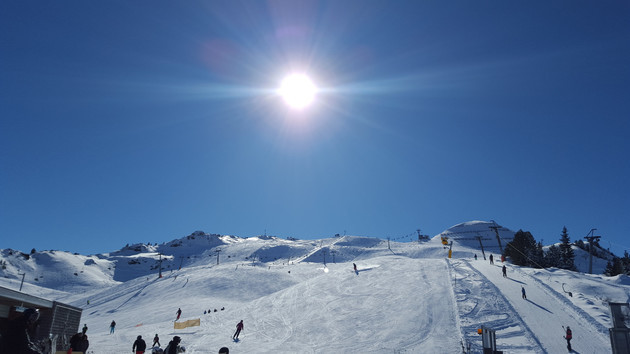Jan. 29 (NBD) -- The world's largest multi-segment fair for the sports business ISPO was held at the China National Conference Center in Beijing from Jan. 25 to 27.
The conference attracted a total of 463 exhibitors from over 20 countries and regions, displaying state-of-the-art products and technologies of 745 brands.
Klaus Dittrich, chairman and CEO of Messe München GmbH, the host of the trade fair, felt optimistic about China's ice-snow sector, saying that the increase of ski resorts and skiers represent Chinese people's enthusiasm towards the ice-snow sports.
The skiing industry in China has seen surprising growth. According to data introduced by Klaus Dittrich at the event, the number of ski resorts across China in 2016 stood at 646, up 14 percent year on year, while the number of ski trips at the same time reached around 15 million, representing a growth rate of 21 percent compared with the previous year.
With regard to the global skiing landscape, a person-in-charge with a consultant company, Laurent Vanat, noted that China and other Asian countries, with an increasing number of people choosing this "cool" sport, have become the new growth engine of the industry.
With the 2022 Beijing Winter Olympics under preparation, China's winter sports market embraces great development opportunities and gets propelled by the government policy.
The China Tourism Academy predicted that the country will outperform the overarching ambition to encourage 300 million people to participate in winter sports ahead of the 2022 Winter Olympics.
The Academy also pointed out that the northeastern region in this country will sustain its position as the first choice for tourists planning long trips, and Zhangjiakou in Hebei province will transform into a mass tourism market from a small, niche market for enthusiastic skiing fans.

Photo/Shetuwang
However, some industry insiders told NBD that the skiing industry in China remains in the primary stage and it should be treated calmly. Although the number of skiers keeps rising, yet the group of people who goes for a second-time skiing is slim. It means that in China, most of the ski resorts in China mainly make a profit from first-time skiers.
Laurent Vanat echoed the observation, explaining that most tourists often get an unpleasant first-time skiing experience in China's skiing resorts and are unlikely to give it a second chance.
Wu Bin, general manager of the Beijing-based skiing equipment and service provider Carving Ski, said to NBD that the country's skiing industry started to rise over the past years and still got a long way to go before it hits maturity.
Huang Geng, chairman of Nanjing B.C. Sports Pproducts Co., Ltd., commented that China's skiing industry is not developing as prosperously as it looks. According to him, domestically, there are just approximately 20 ski resorts that boast a perpendicular throw of more than 300 meters. Besides, only less than one percent of first-time skiers could eventually turn into skiing enthusiasts, largely lagging behind the rate of 5 percent abroad, Huang added.
Huang estimated that it would take around 10 year for the domestic skiing industry to turn mature, judging from the industry's development in other countries. Huang held China's skiing industry is promising yet requires patience.
Laurent Vanat was optimistic about the future development of the skiing sector, believing that China will find a way to improve the development quality of the industry and provide useful experience for the world's skiing sport.
Email: gaohan@nbd.com.cn


 川公网安备 51019002001991号
川公网安备 51019002001991号





